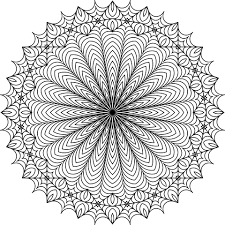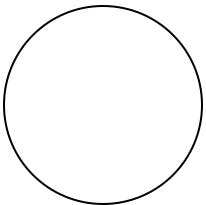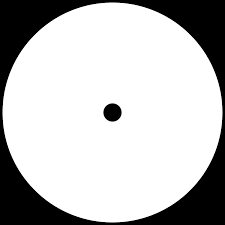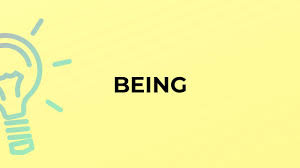TO BE OR NOT TO BE
A Question for Today
Proclaims Hamlet
Conflicted in mind and spirit, Hamlet, Prince of Denmark, considers “Being” or “Not Being.”
Being: life and action
Not Being: inaction
Hamlet:
Whether tis nobler in the mind to suffer
The slings and arrows of outrageous fortune,
Or to take arms against a sea of troubles
And by opposing end them. To die—to sleep,
No more; and by a sleep to say we end
The heart-ache and the thousand natural shocks
That flesh is heir to: 'tis a consummation
Devoutly to be wish'd. To die, to sleep;
To sleep, perchance to dream—ay, there's the rub:
For in that sleep of death what dreams may come,
When we have shuffled off this mortal coil,
Must give us pause—there's the respect
That makes calamity of so long life.
Lines that are still alive in our age.
Why?
The heart of living is “Being.”
Core Virtues:
“Goodness,” “honesty,” “loyalty,” and “integrity” emanate from “being.”
Kant describes “being” centered in “THE GOOD.”
Kant asserts that “The Good” exists of - but beyond - human beings.
“The Good” is valid for all humanity. Whether “The Good” is throughout the Universe (as in God “made the heavens and the earth… or “Gravity “is a universal law…”) is unknown. Either way, “The Good” is far-reaching. A phenomenon (or phenomena), an event, or a universally experienced occurrence (possibly embodied in personage) - “God,” “Mother Nature.”
“The Good” is a perfect geometrical circle. Unlike any circle you or I might draw, the circle is a pure “Form” created in the mind. As Plato asserts, the physical world is not as real as the abstract world of unchanging Forms [a perfect circle] which exists in the “Realm of Forms.”
Humanity recognizes the “word” circle as one basis for everything we know, feel, and do. Think of a “Mandala.”
Atoms were first proposed - as far back as Leibnitz (c 1600) - who postulated “Monad” to describe a fundamental building element of everything in the Universe. He said a “Monad” was circular.
Being, in Kant’s view, is the essence of existence. “Being” for Leibnitz was “MONAD.”
Note: Leibnitz’s (1646-1716) image above is his rendition of Monad. At least, what would a Monad look like to the naked eye if this were possible? It is not. Why? Because he made Monad up?
Leibnitz generated “Monad” to demonstrate that all “existence” must have a starting point. That point = “Monad.”
Monad is a fundamental building block of everything.
The absolute center is irrelevant because Monad is an irreducible totality; what it looks like to us is irrelevant. Monad is “Being” portrayed as a simulated object.
With the aid of electron microscopy, humans have seen atoms. The picture below is a single atom (or the outline of an atom by X-ray). The red, yellow, and blue are fabricated for human consumption.
The first visual X-ray image of a single atom. (see https://www.nature.com/articles/s41586-023-06011-w).
WHAT IS AN ATOM’S SHAPE? “Circular”
“The Good” emanates from a universal awareness that pre-dates “experimental or objective” knowledge. Monad cannot be reduced. Experimental or Objective knowledge is a modern idea based on reductionism, nothing more. My POV: “Objective” knowledge will be replaced (probably soon) - as with other transitional knowledge avenues - by something more representative of our contemporary “true” reality as we think we can perceive it. What will never be replaced is “Being” (the word might change with time as it has).
The word “Being” enters my mind with clients. Its meaning is my psychotherapy guidepost; it gauges my process, including thoughts, feelings, actions, and reactions. An orientation I’ve developed with time, which has served me.
In therapy, I realize that my point of view (POV) is irrelevant to another. Another might appreciate it but cannot fully take on my POV; however, it benefits me because it is mine. I can’t share, sell, or give it away even if I wanted to. I can create an intermediary POV (God, Science, Life, Death, Love, Health), and I (and the other) can bond around the intermediary. Still, another cannot have my POV, so I don’t try to persuade, cajole, or help people see my POV; it’s not possible or practical. POV is a way of “Being.”
Like Positive Aging, “Being” is vital in my work.
Like Positive Aging, writing this entry on “Being” is daunting because one entry cannot cover the implications of the term/concept/idea/experience.
What is Being?
“Being” Defined (Merriam-Webster) 1a: the quality or state of having existence…1b.1: something conceivable and capable of existing. 1b.2: something that exists. 1b.3: the totality of existing things. 1c: conscious existence (example: life). 2: the qualities that constitute an existent thing (example: essence). 3: a living thing (example: a human being).
The breadth of definitional “meaning” is conveyed in the supporting words existence and essence.
“Essence” Defined (Merriam-Webster) 1a: the permanent as contrasted with the accidental element of being…1b.1: something conceivable and capable of existing. 1b: the individual, real, or ultimate nature of a thing, especially as opposed to its existence. 1c: the properties or attributes through which something can be placed in its proper class or identified as what it is 2: the most significant element, quality, or aspect of a thing or person. 3: one that possesses or exhibits a specified quality in abundance as if in concentrated form (example: the essence of integrity)…
The Etymology of “Being”
Being (as a noun) appeared around 1300. At that time, it meant simply “existence” literally. The word “Being” comes from the verb (to be). Old English - beon, beom, bion… - variants from its Germanic root, Biju: “I am, or I will be.”
The phrase “human being” seems a tautology. It isn’t. Why? “Being” refers to the “non-human” as well. Example: Animals have “being.”
Do inanimate things have “being?”
“YES.”
“Being” can refer to all objects because “being” is synonymous with existence. However, as far as I know, objects only exist as objects that don’t have the capacity for transcendence (I discuss transcendence in an earlier entry).
We sometimes attach “being” to health: “wellbeing.”
Why?
Shouldn’t it be “health-being” versus “well-being"?
My health is excellent today.” versus “My wellbeing is excellent today.” or “I’m concerned about your health.” versus “I’m concerned about your wellbeing.”
The American Psychological Association Defines “well-being” as (n) a state of happiness and contentment, with low levels of distress, overall good physical and mental health and outlook, or good quality of life.
The APA chooses a utilitarian definition. This misses much of the word’s meaning, although it is a good starting point.
Well-being is an essential addition to the word “health,” although it is (and is not) connected to “health.” Wellbeing focuses the mind on “health” when health is the focus. However, well-being is present in many other experienced states (e.g., learning). Well-being is related to perception and personal viewpoint rather than health.
We are aware of ourselves when we feel happy or sad. STATES OF (WELL)BEING. Well-being differs from our blood pressure or body temperature, which we might feel (or experience). Still, we interpret this experience or feeling (especially if we have a human-created tool to quantify and measure it) and conclude that we are healthy or sick, which might indirectly lower our well-being.
We can also alter bodily processes by engaging in a feeling state (through meditation or hypnosis). Sometimes, we engage in a feeling state without knowing it. This fits under “well-being,” less so health.
Some people might stretch the health term to capture well-being. This stretch is “Wellness.” A modern term I will not define further.
Wellness gets its potency from “being.”
Wellness to Wellbeing
Can Well-being be generated?
YES
All the time?
A person can generate well-being even in physical sickness or personal distress. It’s not easy when a person feels (or is by health-measurement standards) “unhealthy,” “sick,” or “distressed.” But it is doable.
If “being” is so essential, profound, and powerful,
Can one lose it?
YES.
HOW?
There are so many reasons that I can’t list them.
EXAMPLE: You are driving a car and have high well-being, and someone cuts before you on the freeway; you suddenly lose your well-being in an angry, upset, sad, or otherwise negatively distracted state of mind, “That SOB!” Conversely, you could sustain high well-being when someone cuts you off on the freeway by thinking, “He must be in a big hurry; I wish him luck.”
Your well-being is affected by the intention in your mind.
I believe that we can (more or less) experience “being” all the time as we live in the world.
To experience “being” requires exerting “feeling-thought-action” within a specific time frame. Being is not possible without time. When one dies, the person’s “essence” is no longer in our everyday experience. Essence might still exist, but the deceased person’s “Being” is no longer available to others.
Some might say the deceased person lives on in “my” memories. This may be true, but I would rephrase it as:
You remember your loved one and experience being with your loved one. Your being has merged with your memories, which are now more intense.
Three principles are critical to building a stable “sense of being:”
Awareness
Understanding
Intention
Awareness
“Dr. Hill, I keep doing things around the house because I'm not anxious as long as I’m doing things.”
I’ve heard this statement and its variations so often that I’ve lost count.
Is this statement problematic?
NO, there is no problem with this statement.
On the contrary, it’s good to be “doing.” Being busy, engaged, working hard, and focused on a task can be valuable. We are taught in grade school and by our parents (most of the time) that if you want to “get ahead,” “excel,” and “achieve,” you must WORK HARD.
I know what it means to work hard. I’m a hard worker. I’ve been a hard worker my whole life. Sometimes, I work so hard that I forget to rest.
Growing up a member of the First Christian Church, then converting to Mormonism at the age of 16 years, going to grade school, high school, and community college, then going on a Mormon Mission where one works so hard that “the work” itself subordinates what you are working on.
I know that I can work hard.
EXAMPLE: Think of the Mormon Hymn (There are Hymns like this in every Church and religion) “Put your shoulder to the Wheel.”
The world has need of willing men
Who wear the worker’s seal.
Come, help the good work move along;
Put your shoulder to the wheel.
Put your shoulder to the wheel; push along,
Do your duty with a heart full of song,
We all have work; let no one shirk.
Put your shoulder to the wheel.
…
Then don’t stand idly looking on;
The fight with sin is real.
It will be long but must go on;
Put your shoulder to the wheel.
…an so on…
These are not words for the faint of heart or the slacker. This is a Calvinistic Protestant work ethic purely expressed in song.
Unfortunately, the harder you work, the more focused you become. Sometimes, your focus gets so fixed (and narrow) that you forget what you are working on, why, and at what point the work will end!
Think of “digging a ditch.” You won’t get it done unless you stay with it, whether you like it or not. It’s better to finish what you start because it is so strenuous; if you don’t keep digging, you won’t return. This is why I “HATED” farm work. Hard, mind-numbing with never an end in sight.
ROW, ROW, ROW
THE BOAT IS ALL YOU KNOW
Focus changes awareness.
Why?
When you focus, you mobilize and narrow your awareness to the task. Tasks vary, depending on how challenging it is mentally, physically, or emotionally. Hard work can hypnotically focus a person so that time appears to stand still. It doesn’t stop but becomes irrelevant to the “doer.” “Being” is present in “doing” but narrowly amplified around the task (you become the task when intensity is high).
People have a hard time with a “wider” focus. Example: If you look up the antonyms for focus, you get periphery, boundary, brim, outside, sideline….
People undervalue focus if it gets “wider.” Example: antonyms: disregard, heedlessness, detachment,
People fear broader focus, for example, antonyms: confusion, disorder, and mayhem….
People worry about themselves when their focus gets wider. Example: antonyms: indefiniteness, haziness, unclearness, vagueness, chaos….
I could go on…
The point is tighter focusing is much better understood, tolerated, and accepted as positive (and doable) than broader focus.
Someone who has ADHD is unable to concentrate. Could it be that there is nothing wrong with the person’s brain?
Perhaps people labeled with ADHD focus wider and need learning/education/training to help them capitalize on this individual difference skill. Think about it!
How do I train myself to embrace broadening my awareness?
I won’t answer this because you already know the answer.
The answer is: “changing one’s priority of thought!”
What does this mean? It means beginning to value things “around you.” Pay more attention to the surroundings and the details less. I’m not suggesting you do this to the exclusion of avoiding details. This is not the idea. The idea is to become more open to what’s happening around you.
Understanding
There is a lot of life that people simply don’t understand.
Perhaps they don’t want to understand it. FAIR ENOUGH. Understanding usually takes effort, time, and attention, and this is something we don’t have right now. Understanding can also create anxiety, fear, and worry.
Understanding involves “awareness.” People who understand things, for the most part, are more broadly “aware” than people who do not understand things (doers).
“I’m a “doer,” Dr. Hill.” Really?
What does that mean? It means I choose to select and focus my awareness on something specific, like a task. OK! There is nothing wrong with that, but be aware - tight focus comes at a cost.
One’s POV is impacted by understanding. Sometimes, one’s entire global POV can change with increased understanding. Hey, the world is round, not flat! This is called a paradigm shift.
“Understanding” Defined (Merriam-Webster) 1: a mental grasp. 2a: the power of comprehending. especially : the capacity to apprehend general relations of particular 2b: the power to make experience intelligible by applying concepts and categories. 3a :mutual agreement not formally entered into but in some degree binding on each side. 3b: friendly or harmonious relationship. c: an agreement of opinion or feeling : adjustment of differences.
Understanding is a complex word. Most people focus on the first definition, where understanding is a “POWER.” The term “power” is attractive because this is what understanding is—the power of the mind to grasp things. This power is different from the power to practice something until it happens automatically repetitively.
Understanding can also be emotional, but in the emotional sense, the power of thought is not disregarded or nullified because when we feel something, we almost always try to comprehend it.
Sure, people preach that you can just “feel” and there is no need to understand.
This statement is naive. Understanding is an innate and evolving (growing) capacity within all human beings. It makes us “capable” and “meaningful”. For example, “understanding.” “A sense of sympathy” can be defined as understanding. Even to feel sympathetic, we must exert our power of understanding (as in mentally grasping some aspect of the phenomenon we are feeling sympathetic about.
Understanding is more extensive than “rationalization” or “solution-finding.” Solution find is a tight awareness focus. We need to conceive a solution before we start seeing it, especially when finding it. Understanding is what we do to experience “being” in the world.”
Intention
The idea of intention I’ve described elsewhere: “Will.”
Some people don’t think we have “Will.” If this is the case, intention is only something we notice in ourselves before an action.
Bob Hill’s Definition of “Intention”: a [word] concept that is one product of attention directed to an object of knowledge. EXAMPLE: “an aim” or what one “intends”…
Every-Day Definition: If you mean something, it's an intention. Your goal, purpose, or aim is your intention. You mean to do it, whether you do it or not.
APA Dictionary Defines Intention (Noun) as: 1. a prior conscious decision to perform a behavior. In experiments, intention is often equated with the goals defined by the task instructions. 2. more generally, any directedness in one’s thoughts or behaviors, whether or not this involves conscious [decision-making.] —intentional adj
Intention is essential for living. In a previous blog, I described living the “deliberate life.” What this means is living with INTENTION.
Intention is associated with one’s WILL, but it is not entirely one’s Will.
Really? YES.
There are different kinds of Intention
Intention for doing
Intention in Action
Intention as “The Good”
Intention as Belief
Intention as a Plan
I use these categories because it helps me. The intention idea is broader than these, but the categories help constrain this entry around intention and one’s intention.
Intention as action is associated with the future. I intend to write this entry. Right now! Probably not, but my intention “right now” is to keep typing. My cat is meowing at me. I speculate she intends for me to feed her. Will she keep meowing? No. Why? It’s not working, and it's not time for her to be fed (she knows this), so she will get up on my desk, jump in my lap, and try to distract me. That’s cute because she loves you. Not really or hard to say. I presume she’s hungry and intends to get fed pretty soon, but she desires food now, and her intentions are engaged in focused behaviors. This is intention in action.
The intention is the “mental” apparatus within us to start the process of “realization.” Bob Hill’s philosophy: Realization is a transformative feature of the human psyche. If we can “realize” something, it can happen, or we can move towards it. Realization is what therapy is all about (my POV).
“I’m engaged in a behavior/thought process/feeling state I never intended. Dr. Hill,” “I’m depressed, afraid, anxious, cycling in my mind, caught up with a rule or demand state that won’t turn off for me (wash your hands!).” “What can I do?”
Most people want to “do” or “be a doer” about something because they KNOW (or strongly believe) that the only way to solve the problem is to “do” something about it. We are unfortunate recipients here of more Calvinistic Dogma in whatever form you like for this problematic thought process.
Why is this a problematic approach? It is based on the assumption: If you don’t “do,” you will never “solve.” If you don’t do something about your depressed state, it will never go away.
I’m not saying that “doing” is not essential or that “action” is irrelevant. I’m not saying that if you take a pill, your depression won’t eventually lift.
I am saying that the approach is over-applying “doing” at a grand scale. You also hope that a bunch of intelligent/educated people were doing something around depression and then came up with this pill/drug that will alleviate your depressed state as an outcome or product of “doing.”
There is always more to it than “doing.”
The three processes I’ve described, Awareness, Understanding, and Intention, are part of my “more to it” expression is all about. Awareness, in particular, is key when treating depression. Shifting awareness can be a powerful therapy tool. Sometimes in depression, awareness gets misaligned. And if misaligned, all the doing in the world won’t help you; it might even make things worse.
I will develop this idea further in a special entry on “awareness.”
Awareness is not passive but a powerful tool for helping people, especially those with intractable conditions like depression and, in particular, OCD, recover.
My writing space has ended for this entry. Watch for my entry on awareness. “Awareness as a Path to Better Mental Health.”
NOTE:
This is another philosophical blog entry. For those who prefer the case-study approach, these entries are coming. I intend to write more case-study entries. My mind was on “Being” today, so I wrote about it. I hope you find my words helpful.















